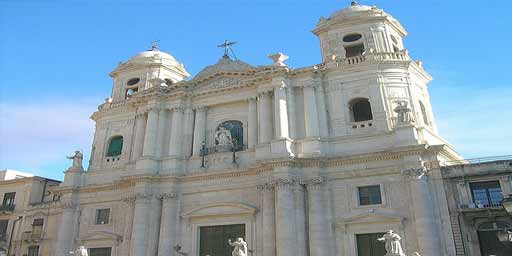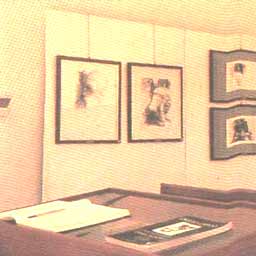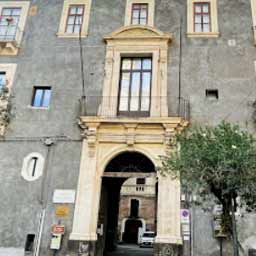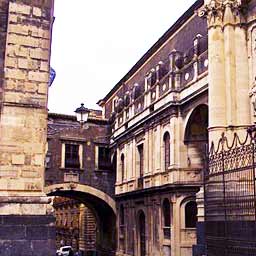Church of San Francesco in Catania
The famous Church of San Francesco d'Assisi all'Immacolata in Catania dominates the square of the same name which opens onto Corso Vittorio Emanuele, near the scenic and historic via Crociferi.
The church is clearly dedicated to the poor man of Assisi, but he is also given the nickname "Immaculate Conception" due to the profound devotion of the people of Catania to the latter, so much so that inside it houses the eighteenth-century wooden statue depicting the Virgin Mary.
After the disastrous earthquake of 1693, nothing remained of the ancient structure and the new eighteenth-century building, although repeating its ancient dimensions, took on new architectural features of a Baroque style.
The body of the church stands with the limestone facade, facing with three doors to the west; the churchyard is preceded by a staircase of Etna lava stone, with a wrought iron gate and a balustrade with four pillars that support the imposing statues, representing from south to north: San Giuseppe da Copertino, Sant'Agata, Santa Chiara d 'Assisi and San Bonaventura.
The façade was built around 1854 with sixteen semi-columns leaning against the walls and three simulacra representing - from south to north - Saint Anthony of Padua, the Immaculate Conception behind a gate decorated with lamps, Saint Francis of Assisi.
In the pediment the insignia of San Francesco are carved and on the cusp are other figures around the iron cross.
On the sides of the pediment two quadrangular turrets with openings can be seen upwards, and they are surmounted by small domes on which the iron weathervanes and the initials indicating the four cardinal points are planted. Of these turrets the northern one serves as a bell tower with three sacred bronzes.
The interior of the basilica with a Latin cross is divided into three naves divided by six pillars and with a marble floor with white and blue squares. The stucco decorative apparatus is made by Giuseppe Gianforma with the collaboration of his son Gioacchino and finishing by the plasterer Filippo Cunsolo.



